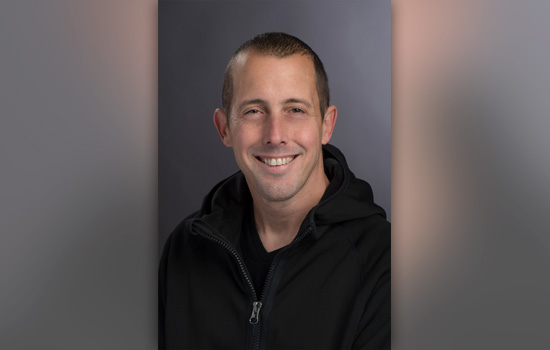Symposium showcases achievements in research
Event on Aug. 7 showcases outstanding achievements in scientific research
A. Sue Weisler
Andrew Phelps, founder and director of RIT’s Center for MAGIC, is the keynote speaker at this year’s RIT Undergraduate Research Symposium on Aug. 7.
The phrase “good to the last drop” has a new meaning for student Saddam Alrobaie, who is spending his summer researching how to extract oils and carbohydrates from spent coffee grounds to produce biofuel.
“About 20,000 pounds of coffee hold the potential to produce 400 to 500 gallons of biodiesel,” said Alrobaie, who is originally from Yemen and is transferring into Rochester Institute of Technology’s biotechnology program this fall. He is working with research partner and fellow biotechnology transfer student Fatima Zara, from Pakistan, and continuing the ongoing research conducted by Jeffrey Lodge, associate professor in RIT’s Thomas H. Gosnell School of Life Sciences. “Imagine the positive global impact on our environment if we could produce biofuel using something as basic and natural as spent coffee grounds,” added Alrobaie.
Alrobaie’s work will be showcased—alongside more than 200 other innovative researchers— at the 24th annual Undergraduate Research Symposium from 8 a.m. to 4 p.m. on Aug. 7 in RIT’s Louise M. Slaughter Hall and Sustainability Institute Hall. In addition to students participating from RIT’s main campus in Henrietta, three students will present remotely from the university’s international branch campus at the American University in Kosovo.
Structured as a professional research conference—where oral presentations and poster presentations are broken up thematically—some of this year’s research themes include biomedical and life sciences; optics, photonics and imaging; energy and sustainability; chemistry and materials sciences and engineering; computer modeling, design and simulation; ecology; and social sciences and humanities.
Hence, this year’s presentations feature a gamut of far-reaching innovations—from researching how to increase the energy density of lithium-ion batteries using high-capacity germanium nanoparticles, to analyzing the stress and strain of an abdominal aortic aneurysm.
Fifth-year biotechnology and molecular bioscience student Lauren Heese is working with her research partner Jacky Lim to further develop the connection between photoacoustic imaging and chemical dyes for the future of early cancer detection. Heese, from Latrobe, Pa., and Lim, a third-year chemistry student from Amherst, N.H., use organic synthesis to make the dyes—or targeted molecular imaging agents—to “find” cancer by “lighting it up” or making it generate an ultrasound signal. The students hope that the intensive testing of the chemical agents they are currently doing will one day lead to clinical trials.
“Our research could be the answer to accurately and safely detecting cancer,” she said. “This is extremely difficult chemistry and it is amazing that we have come this far and with such promising preliminary results.”
“RIT’s commitment to engage in high-impact student-centered research is what makes us distinctive,” said Ryne Raffaelle, RIT vice president for research and associate provost. “It’s been exciting to see the growth of our undergraduate research over the past decade. This symposium is an opportunity for students to share their research with their peers and the community, and we are thrilled that international students from our campus at the American University in Kosovo will also be joining us.”
The keynote speaker for the symposium is Andrew Phelps, founder and director of RIT’s Center for Media, Arts, Games, Interaction and Creativity (MAGIC). Phelps, a professor in RIT’s School of Interactive Games and Media, which he founded in 2011, is also a digital artist and technologist with more than 15 years experience. His work in games education, digital media and interactive software has been published in numerous articles, journals and periodicals, as well as by CNN, USA Today, NPR and The New York Times.
In 2001, he offered RIT’s first course in game programming which quickly grew into a concentration of courses available to students in computer science, information technology and software engineering. From there, he led a multi-disciplinary faculty team to design and establish a master’s degree in game design and development in 2006 and a bachelor’s degree in the same program in 2007. He created the Department of Interactive Games and Media in 2009, which became a school in 2011.
Under his administration, the degree programs grew to serve a student body of more than 700 and the programs were each ranked fourth in the United States by The Princeton Review.
He has written more than 30 papers and journal publications, delivered more than 50 professional presentations around the world, and has served on a number of grant and funded projects in collaboration with the National Science Foundation, the U.S. Department of Education, the Library of Congress, Microsoft Research and others. He has served on standards bodies and academic and industry working groups, has served as an adviser, reviewer and mentor for both faculty and students throughout RIT and academia, and has also acted as a curriculum designer and program reviewer at other universities.
The symposium is organized by RIT’s Office of the Vice President for Research and sponsored by RIT’s Office of the Provost.
For more information, contact Clare Lagiewski, operations manager for RIT’s Albert J. Simone Center for Student Innovation and Entrepreneurship, at cxlism@rit.edu or 585-475-2185.














